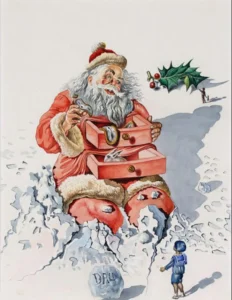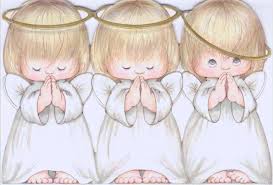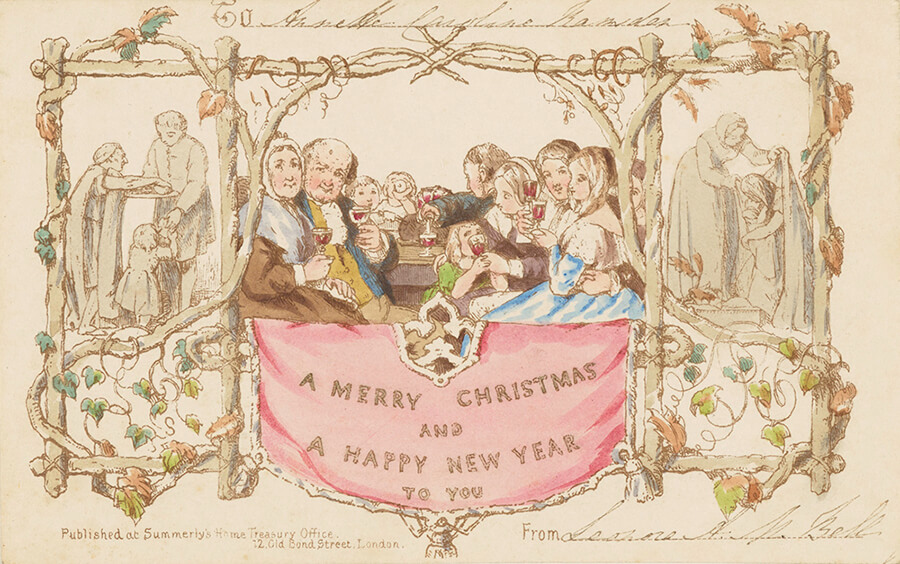Christmas is a time of giving – and in this digital world where emails have replaced letters, what could be nicer than receiving a hand-written Christmas card in the post?
Today, the humble Christmas card has many forms: stylised festive image, an idealised snow-scape, a traditional nativity scene.
No matter the design, at the heart of each one is a message saying ‘hello, we’re thinking of you and your family at this time of year’.
But when did the tradition of card giving begin?
A start of a tradition
Christmas has been celebrated across Europe for millennia. But it wasn’t untill 1611 that the first recorded Christmas Card was given; German physician, Michael Maier, gave his seasonal greetings to King James I of England.
We’d have to wait more than 200 years before the first Christmas card was sold commercially. Civil servant Henry Cole asked his friend, the artist John Callcott Horsley, to illustrate his 1843 seasonal greeting card (pictured above).

An example of the surreal nature of Victorian Christmas cards
The card depicted the Cole family enjoying a feast. One thousand of the 5×3 inch cards were lithographed and sold at a shilling each (a week’s wages at the time).
Cole’s card was devised as a means of saving time – removing the need to write full letters to his friends and family.
In 1948, Queen Victoria sent her first Christmas card. The illustration showed herself, Prince Albert and their children around a tree. This quaint image was in keeping with Victorian cards at the time.
However, things soon took a surreal twist. Before long, Christmas cards of the era were displaying cats walking, a frog dancing with a stag beetle, and talking vegetables – and the festive illustrations got even weirder than these!
Modern Christmas cards

Norman Rockwell illustration
The modern Christmas card industry is believed to have begun in America. Joyce Hall (the founder of what would become Hallmark) published a holiday card from his Kansas City-based postcard printing company in 1915. The company’s cards were 4 inches wide, 6 inches high, folded once, and inserted in an envelope.
A tradition was born.
Later, Hallmark commissioned work from artists such as Salvador Dali, Grandma Moses and Norman Rockwell to create illustrations for their cards.
Today we may even receive a card with an image of the sender’s family. This was popularised by Queen Elizabeth II – and the tradition continues in the Royal Family to this day. Some cards – such as those featuring Queen Elizabeth’s Silver Jubilee in 1977 or Princess Diana’s last Christmas cards in the 1990s – are particularly collectible.
Christmas Cards facts
- Unsurprisingly, the most valuable Christmas card – according to the Guinness Book of Records – is the original Cole card. One was sold for £22,000 in 2013. There’s thought to be only 12 of the original 1,000 left
-

The world’s most popular Christmas card
The most popular Christmas card of all time has sold 34 million copies since it was first published in 1977. The image showing three angels is still part of Hallmark’s collection
- The Royal Mail delivers around 150 million cards in the UK each year
- The Christmas card industry was worth £161 million in 2020
- One tree makes an estimated 3,000 cards
- Robins came to symbolise Christmas because postmen in Victorian England were called “robins” due to their red uniform
- In the nineteenth century, the British Post Office used to deliver cards on Christmas morning
- The first Christmas postage stamp was released in Canada in 1898.
Get posting
Hopefully you’re now inspired to send your own Christmas cards.
Whether its festive, humorous or traditional, make sure you send yours as soon as possible to ensure they reach the recipient in time for the big day.
The Royal Mail has its last postal dates on its ‘Get Ready For Christmas 2024’ webpage.
Happy Christmas from the Your East Sussex team.


